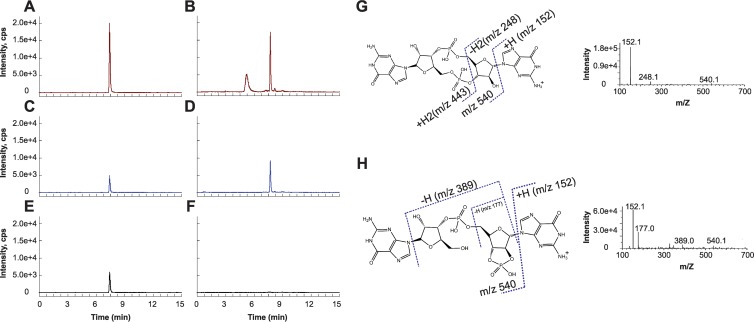Fig 1.
Development of an LC–MS-MS method to uniquely detect c-di-GMP. Three separate single reaction monitoring (SRM) transitions are shown for a synthesized c-di-GMP standard and a prevalent signal from B. subtilis lysates. (A to F) After collision-induced dissociation (CID), SRM transitions m/z 691 → 152 (A and B) and m/z 691 → 540 (C and D) are seen in both samples, whereas the m/z 691 → 248 transition (compare panels E and F) is unique to c-di-GMP. Intensity is shown as counts per second (cps). Two endogenous molecules in bacterial extracts have the same parent ion mass as c-di-GMP and elute at retention times of 5.2 min and 7.8 min, respectively. (G and H) Analysis of the CID spectra of c-di-GMP (G) and the latter peak from B. subtilis lysates (H) provides a molecular basis for the major transitions seen as indicated on the structures of c-di-GMP and the lysate molecule, predicted to be a guanine dinucleotide with a 2′,3′-cyclic phosphate, 2′,3′-c-GpGp.

